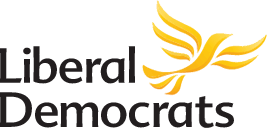The Voting System
Having explained the background now is a good time to talk about the European Union’s democratic system. The voting system used for electing our MEPs is a form of proportional representation. However, it was felt that it was not working too well and in 1999 via the Amsterdam Treaty, it was changed to a system devised in the 1870s by Victor D’Hondt, a Belgian Lawyer. It is a “Closed” (Party List) voting system where Candidates are chosen by their Party members, much in the same way as the British “The First Past The Post” System (FPTP). The difference being that with FPTP, the Party choose just one candidate and then the electorate choose which candidate from a range of candidates representing a variety of Parties. With the D’Hont system, each political Party puts up the same number of candidates, as there are MEPs in a particular region. So in the case of the South East region, each Party will put up 10 candidates. Unlike local and national government elections, where candidates must impress their Party membership consisting around a few hundred members, at regional level, there will likely be thousands of members, spread out over a number of counties. The logistics are enormous and would defeat many right from the start.
Once each Party has selected its candidates and numbered them in order of priority. The public gets to vote for the Party rather than the individual candidate, although each candidate’s name appears on the ballot paper. In the South East region where there are 10 European Parliamentary Seats, there will be 10 candidates multiplied by the number of Parties contesting the Seats, leading to a very long ballot paper. Under this system, the candidates are less significant to the electorate than the Party. Something not well accepted by UK Voters who prefer to know who they are voting for. Probably for this reason, many residents in the South East Region cannot name their Members of European Parliament. Because of this election process, each of the 10 MEPs collectively represent the South East Region, irrespective of Party they belong to, but are unlikely to work together as in a coalition.
European Union Closed List Voting System
To the British electorate who have got used to their electoral system, it can seem a bit strange when confronted with an EU ballot paper, which places the emphasis on a political party rather than the candidate.
Below is a typical example of an EU ballot paper;-

The D’Hondt System Explained
Seats are allocated in successive rounds, with one seat allocated in each round. In each round, total votes for each party are divided by the number of seats the party has already won, plus one. The party with the highest remaining total wins the seat.

- Round 1: The SNP won the most votes in Scotland, and takes the first seat
- Round 2: The SNP vote is divided by two, reflecting their seat won in Round 1. Labour has the highest remaining total and takes the second seat
- Round 3: The SNP vote remains (160,504) and Labour votes are now divided by two (114,927). The Conservative total is now the highest (185,794)
- Round 4: The SNP vote still exceeds the Liberal Democrat vote (127,038), so the SNP takes a second seat
- Round 5: The SNP vote is now divided by three, reflecting their two seats won (107,002). The Liberal Democrats take the fifth seat
- Round 6: Labour takes the final seat

